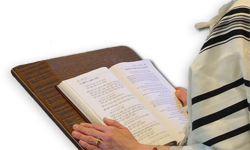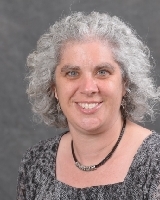announcing the publication of
A Manifesto for the Future: The ShefaNetwork Archive
Conservative/Masorti Judaism Dreaming from Within
Edited by Rabbi Menachem Creditor
Available for purchase at http://www.amazon.com/Manifesto-Future-ShefaNetwork-Conservative-Dreaming/dp/149279712X/
(See Table of Contents Below)
This collection has been nine years in the making and is an archive of overflowing Jewish passion. There future of Conservative/Masorti Judaism depends on voices like those shared in this book, which was created to fulfill the mission of ShefaNetwork: to bring together dreamers from within the Conservative/Masorti Movement and to give their dreams an audible voice. ShefaNetwork was born in December of 2004 to create a virtual community of professional and lay activists in the Conservative/Masorti movement and a place to discuss the movement's direction and ways of strengthening Conservative Judaism for the future. Perhaps one of the greatest strengths of the Shefa enterprise is the way it has avoided strict boundaries between the intellectual and the practical. Shefa has provided a very fruitful engagement between intellectuals and practitioners, many of whom should be described as falling in both categories. This is as it should be, because a religious movement needs both a coherent vision with philosophical rigor and historical perspective, and the practical wisdom to enact this vision. Usually, these two tasks are not done well by the same people, but that too is a bias that leads us to divide the world into "theorists" and "practitioners," as if the two are from different planets. If the Conservative movement is going to succeed in creating spiritual communities in its schools, synagogues and camps, it will have to bring together the theological visions of the movement's intellectual lights with the practical wisdom of professionals and lay people. The most important accomplishment of ShefaNetwork may be that it has begun a conversation that includes all of these essential voices.
Contents
1 Introduction, Rabbi Menachem Creditor
From ShefaJournal 5766: Definitions
15 Foreword, Rabbi Menachem Creditor
17 Editors' Introduction, Sara Shapiro-Plevan and Rabbi William Plevan
33 The Challenge Facing the Conservative Movement, Rabbi Judith Hauptman
37 Between the Holy and the Sacred: Conservative Judaism's Halachah Controversy, Rabbi Ira F. Stone
46 Fostering Holiness and Spirituality in a Solomon Schechter Day School, Jane Taubenfeld Cohen
52 Finding Spiritual Jewish Prayer, Rabbi Menachem Creditor
55 Traditional and Egalitarian, Emily Fishman
62 Revitalizing the Conservative Synagogue, Fran Gordon
71 A Manifesto for the Future: Drop 'Conservative' Label to Tap True Meaning and Reach the Faithful, Rabbi David Wolpe
81 To My Rabbis and Teachers, Jonathan Lopatin
89 On Being a Conservative Jew, Rose Shoshana Wolok
91 Halachah and the Conservative Movement, Aaron Weininger
95 Ethically Driven Halachah: The Future of the Conservative Movement, Rabbi Judith Hauptman
100 The Struggle for Self-Definition in Conservative Judaism, Rabbi Robert Gordis
123 Maintaining the Balance: Achieving the Dream, Nicole Guzik
From ShefaJournal 5768.1: Instrumental Music on Shabbat and Chag
131 Editor's Introduction, Rabbi Menachem Creditor
133-168 A conversation including Robert L. Smith, Dahlia Schwartz, Glenn Tamir, Rebecca Boggs, Rabbi David Kay, Craig Taubman, Rabbi Barry Leff, Karen Silberman, Rabbi Menachem Creditor, Fran Gordon, and Rabbi Neal Loevenger (January through May 2008)
169 Conservative Judaism and Social Justice, Rabbi Bill Plevan
169 Merge the Movements?, Rabbi David Kay
From ShefaNetwork Journal 5768.2: Kashrut, Halachah, and Conservative Jews
177 Editor's Introduction, Rabbi Menachem Creditor
179 The Invitation from Rabbi Barry Leff
181-250 A conversation including Zack Berger, Fred Passman, R.L. Smith, Larry Lenhoff, Steve, Rabbi Barry Leff, Avi Hein, Rabbi Menachem Creditor, Fran Gordon, Rabbi Jim Rogozen, Rabbi Joshua Heller, Rabbi Bill Plevan, Rebecca Boggs, Anne Pettet, Rabbi David Bockman, Ilan Glazer, Rabbi David Siff, Gella Solomon, Rabbi Len Sharzer, Rabbi David Kay, Rabbi Andy Sacks, and Rabbi Dr. Ilana Rosansky (Messages 2109‐2164 on the Shefa listserv)
251 A Closing Reflection on the Conversation with Rabbi Leff, Rabbi Menachem Creditor
From ShefaNetwork Journal 5769.1: USCJ (Vol 1)
256 Editor's Introduction, Rabbi Menachem Creditor
257-311 A conversation including Zack Frankel, Steven Katz, Rabbi David Kay, Fred Passman, Jonathan Loring, Rabbi Bill Plevan, Anne Pettit, Ira Fink, Rabbi Menachem Creditor, Steven Katz, Nina Kretzmer, Matt Shapiro, Shoshana Michael-Zucker, Rabbi Leonard Gordon, Marc Stober, and Dahlia Schwartz (selected posts between February 17 and February 22, 2009)
From ShefaNetwork Journal 5769.2: USCJ (Vol 2)
313 Editor's Introduction, Rabbi Menachem Creditor
315 Toward a new vision for the United Synagogue of Conservative Judaism, Rabbi Neil A. Tow
317 Conservative Judaism's Future, Karla Worell
321 To What do We Aspire? Dr. Jonathan Woocher
324 Conservative Judaism: Valued and Validated, Rabbi David Kay
327 Moving Forward, Rabbi Jason Miller
329 What is Success? Fred Passman
330 No Plant is Fed from the Top, Paul Levine
331 The Chance to Build a Jewish Organization from the Ground Up, Rabbi Neal Joseph Loevinger
From ShefaNetwork Journal 5770.1: The Relationship Between Conservative Judaism and the Conservative Movement
335 Editor's Note, Nina S. Kretzmer
339 Shmirat HaGuf, Rabbi Menachem Creditor
Part I: The Shmirat HaGuf Discussion
341 It Begins with the Local Community, Fred Passman
346 Body or Method, Rabbi David Bockman
348 Response to Rabbi Bockman, Fred Passman
350 Response to Fred Passman, Steven Katz
352 The Compelling Idea, Dr. Jonathan S. Woocher
355 Response to Dr. Woocher, Fred Passman
Part II: An Issue of Past, An Issue of Present: Responses to Previous ShefaJournals
357 Rabbi Nicole Guzik, Response by Rabbi Neil Gillman
359 Rabbi Jim Rogozen, Larry Lenhoff, Response by Rabbi Randall J. Konigsburg
366 Jacob B. Ukeles, Responses by Paul Levine & (p. 370) Jonah Rank
377 Paul Levine, Response by Fred Passman
ShefaJournal 5770.2: "Tech-Tonic" is available online at tinyurl.com/shefatechtonic
From ShefaJournal 5770.3: Why Must Masorti/Conservative Judaism Thrive?
383 Editor's Note, Rabbi Menachem Creditor
385 Response 1: Nina S. Kretzmer
386 Response 2: Rabbi Neil Tow
387 Response 3: Karla Worrell
From ShefaJournal 5771.1: HaYom uMachar: Visions of the Conservative/ Masorti Movement in North America
391 Editor's Note, Rabbi Menachem Creditor
395 Bring Sacred Back, Ilan Glazer
398 Response to Ilan Glazer, Fred Passman
401 Public Letter to the ShefaNetwork and members of the Hayom Coalition, Nina S. Kretzmer
404 Strategic Plan Feedback for College Students and Young Adults, Rabbi Daniel Greyber
409 Suggested Responses Rabbi David Kay
413 Visioning Future Success: The Next Iteration of a Central Organization for Conservative Judaism and Kehillot, Rabbi Loren Sykes
426 A 3-Part Jewschool Post : "The USCJ Strategic Plan", by "ImproveUSCJ"
452 My Dream, Gabriel Nachman Seed
458 Learning for the Future, Nina S. Kretzmer
462 Towards a New Model of Leadership for College Kehillot, and the Entire Movement, Sandy Johnston
473 Input on the USCJ's Strategic Plan, Judy Gerstenblith (University of Maryland, College Park)
485 About ShefaNetwork







